People
‘I Have Always Liked to Discover Artists’: Bianca Jagger Takes Us on a Whirlwind Tour Through the London Gallery Scene
We caught up with the humanitarian philanthropist and former actor for the inaugural London Gallery Weekend.
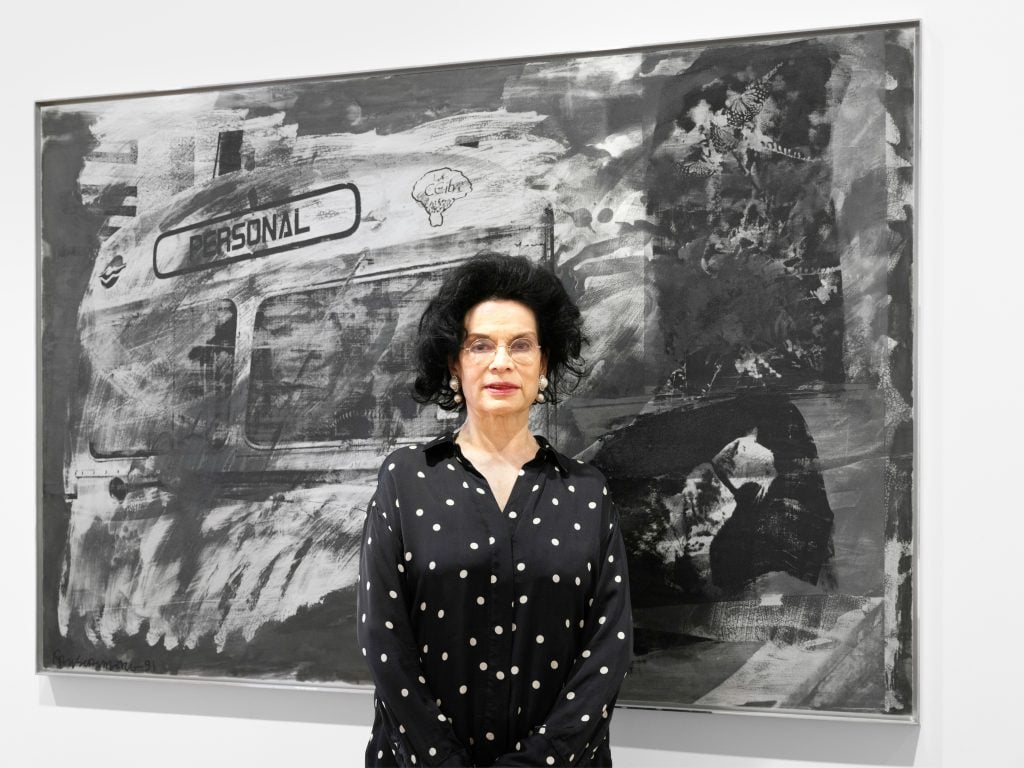
We caught up with the humanitarian philanthropist and former actor for the inaugural London Gallery Weekend.

Naomi Rea

She was dazzling.
With sparkling earrings and a silky polka-dot ensemble, Bianca Jagger, who I met on the occasion of London Gallery Week, struck me as possibly the only person who could spark envy from behind a face mask, protective shield, and medical gloves.
But when I complimented her sartorial choice, she leaned in conspiratorially with an arched eyebrow and told me: “They’re just pyjamas from H&M!”
Jagger is a living legend. Today, she is best known for her work as a Council of Europe goodwill ambassador and as chair of the Bianca Jagger Human Rights Foundation, which is dedicated to addressing climate change and defending the rights of women and Indigenous peoples.
In the 1970s, she was part of the fabric of the art, fashion, and design scene in downtown New York. Then an actor, she ran with the in-crowd at Studio 54 with artistic legends including her close friend Andy Warhol.
“I met lots of young artists before they were famous, because I was a friend of Andy Warhol and he was a patron for young artists,” she told me. “I met Jean-Michel Basquiat and Keith Haring. They are two artists that I not only loved their work, but whom I liked as people. And there were others in the art scene, in the downtown galleries, which of course are now well-established galleries, which was not the case at the time.”
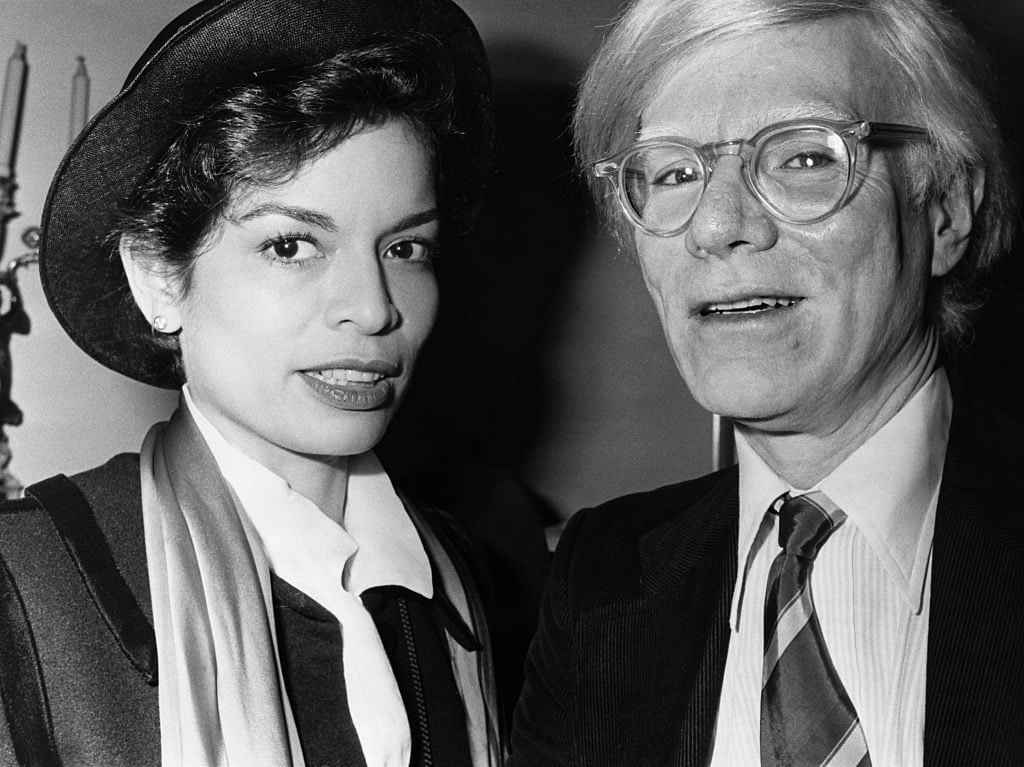
Bianca Jagger and Andy Warhol Photo by © Hulton-Deutsch Collection/CORBIS/Corbis via Getty Images.
Her personal collection includes works by many of these greats, and includes birthday and Christmas presents from artist friends including Warhol and Basquiat. Others, like Ross Bleckner and Jason Martin, have donated artworks to raise funds to support her humanitarian work, and Marc Quinn created the logo for her foundation.
When I first floated the idea of shadowing Jagger as she previewed a few gallery shows, she was enthusiastic, although wary about leaving the house. Now in her 70s, she is among those most vulnerable to the pandemic, and has been in serious lockdown mode for a year and a half.
Despite being fully vaccinated, she still takes all the precautions—and does not hesitate to chide an improperly covered nose when she sees one.
Our first stop was Thaddaeus Ropac gallery. Jagger has known the gallerist for decades, and recalled early meetings with him in New York. One of her most cherished possessions came from one of these early days, when Ropac and Basquiat were en route to her birthday party, and the artist suddenly remembered that he had forgotten to bring the birthday girl a gift. Basquiat rushed back to his studio and painted a box to bring to her.
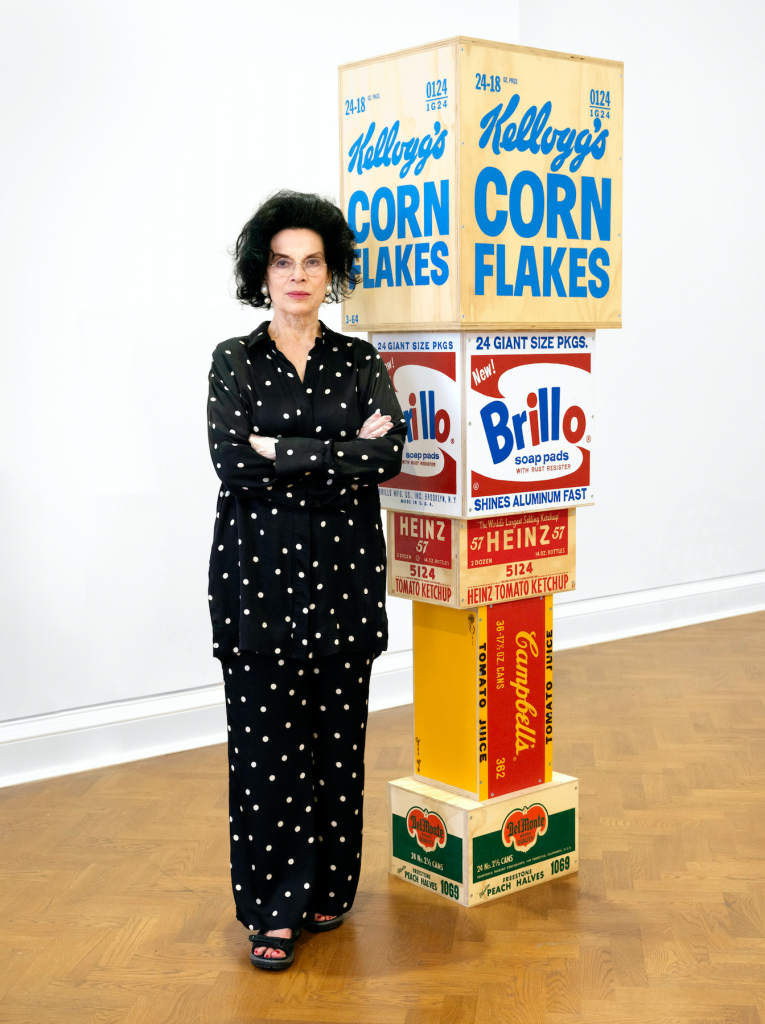
Bianca Jagger in “Tom Sachs: Ritual” at Thaddaeus Ropac. Photo by Eva Herzog. Courtesy Thaddaeus Ropac.
In an upstairs gallery, Tom Sachs is presenting new sculptures of everyday items, such as laundry baskets and detergent, displayed on bespoke pedestals inspired by Modernist forms (“Tom Sachs: Ritual,” through July 31).
“I first visited Tom Sachs with Thaddaeus many years ago, when Tom was not yet a famous name, so it is interesting to see what he is doing for this exhibition,” Jagger said.
Among the works on show was a stack of plywood renditions of Andy Warhol’s iconic boxes.
“I am very interested in what Sachs calls his ‘guilty consumerism,’ and his fascination with everything that connects him to the subculture of urban metropolises and the nature of 24-hour living,” Jagger said. “For Andy, for example, boxes of Brillo, Campbell’s soup cans, and all those objects were what he saw his mother use every day when he was ill as a child and he had to stay at home. These objects were meaningful to him. I am fascinated with what Tom Sachs has done with his Warholian investigation into consumerism and with the notion of ritual.”
While there, we Facetimed Sachs in his New York studio, and they recalled a meeting in the early 1990s. Jagger connected Sachs’s 1998 work Chanel Guillotine (Breakfast Nook) to Warhol’s Electric Chair.
“Working to abolish the death penalty is an important part of the work of the Bianca Jagger Human Rights Foundation, and that’s why Andy’s Electric Chair has been so significant and important to me,” she said. “Some of Andy’s earlier works are some of his greatest, like the ‘Death and Disaster’ series, which he created with a purpose, I think, that often art critics who didn’t know him, don’t understand his motives. Andy was very Catholic, and he was against the death penalty.”
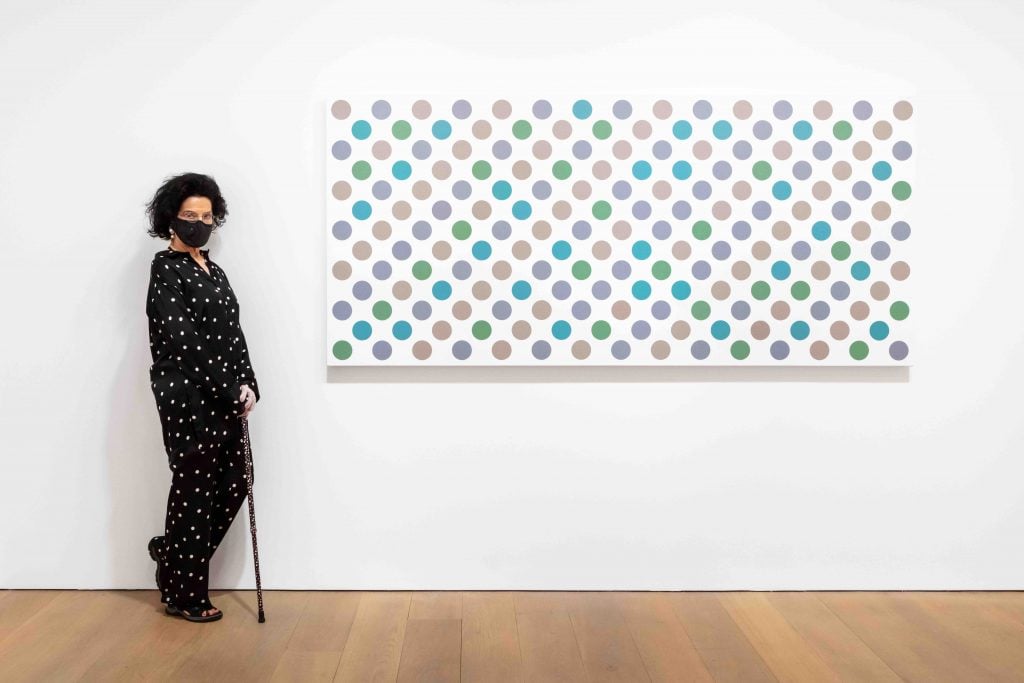
Bianca Jagger in “Bridget Riley: Past Into Present” at David Zwirner. Photo courtesy David Zwirner.
We spoke further about the tense political situation unfolding in her native Nicaragua. Earlier this week, authorities commanded by the country’s president, Daniel Ortega, stormed the home of election challenger (and Jagger’s friend) Cristiana Chamorro, and placed her under house arrest. With life and death at stake, I suggested that galleries might seem trivial by comparison.
“Art is never trivial,” she said. “Throughout history, artists have played an invaluable role in standing up for democratic principles, in defense of human rights, civil liberties, and freedom of expression. They have recorded and denounced the abuses and horrors of their time. Today, most young people have lost faith in politicians and big business. The creative community has the opportunity to usher in a new era.”
Art sales have been a key source of funding for Jagger’s foundation, which has also hosted the Art for Human Rights gala since 2011. Some of the world’s leading artists, from Anselm Kiefer and Robert Longo, to Tracey Emin and Sylvie Fleury, have donated artworks to further the foundation’s work. (Unfortunately, the pandemic has made the gala impossible over the past two years.)
It’s a short trip down the grand staircase of Thaddaeus Ropac’s Ely House to the next exhibition of two series of metal paintings by Robert Rauschenberg from 1991 composed of silk-screened photographic images and gestural strokes on aluminium supports (“Robert Rauschenberg: Night Shades and Phantoms,” through July 31).
“I would like to highlight Robert Rauschenberg as one of the best exhibitions in the London galleries at the moment,. This exhibition showcases some of Rauschenberg’s greatest works. He completed them during his long experimentation and obsession with metal in the mid-1980s and ‘90s,” Jagger said, adding that Rauschenberg was another artist she met with Warhol.
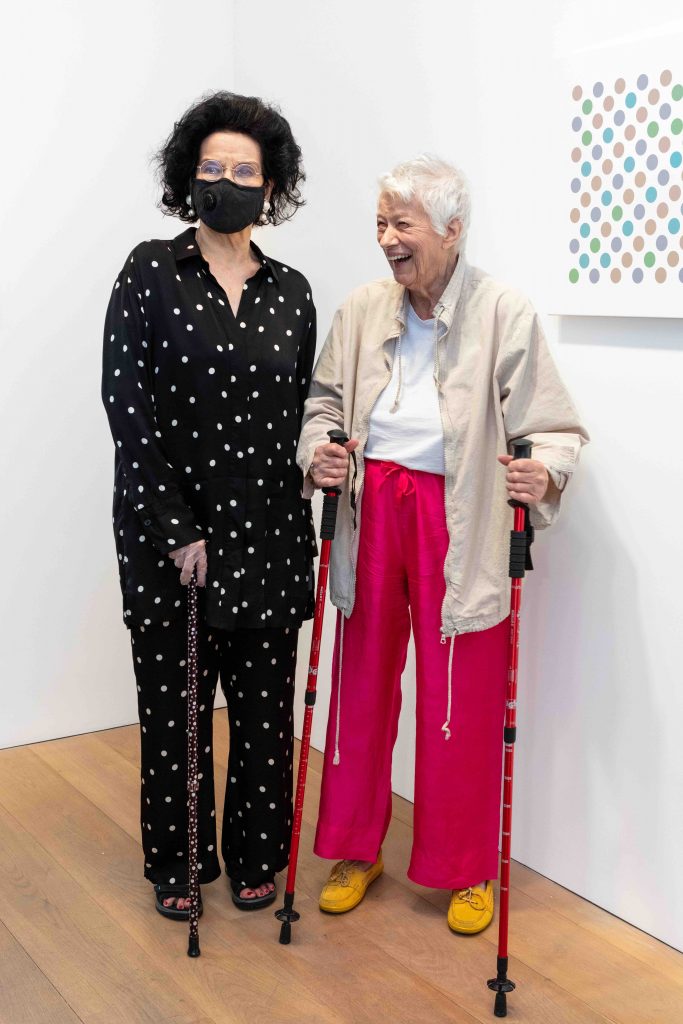
Bianca Jagger and Bridget Riley in “Bridget Riley: Past Into Present” at David Zwirner. Photograph by Yuki Shima. Courtesy David Zwirner
We strolled down to David Zwirner, where the work of visionary painter Bridget Riley was already a buzz. In the exhibition, new works from the past two years expand on her six-decade career (“Bridget Riley: Past Into Present,” through July 31).
Jagger was delighted when we bumped into Riley herself. “There are very few people who I have wanted to meet during my lifetime, and Bridget Riley is one of them,” she said. “She is one of my heroes. Imagine that she was once criticized for her work being too scientific! And it is also impressive to see what she was able to achieve in a period when there was so much resistance to accept and to recognize the value of women artists,” she said.
“This exhibition really shows how her work has stood the test of time. She has always pushed it to the limit, from all her amazing black-and-white optical illusions of the 1960s, and she still making wonderful work that I think people should rush to see. She’s not just one of the greatest women artists, but one of the greatest artists of our time.”
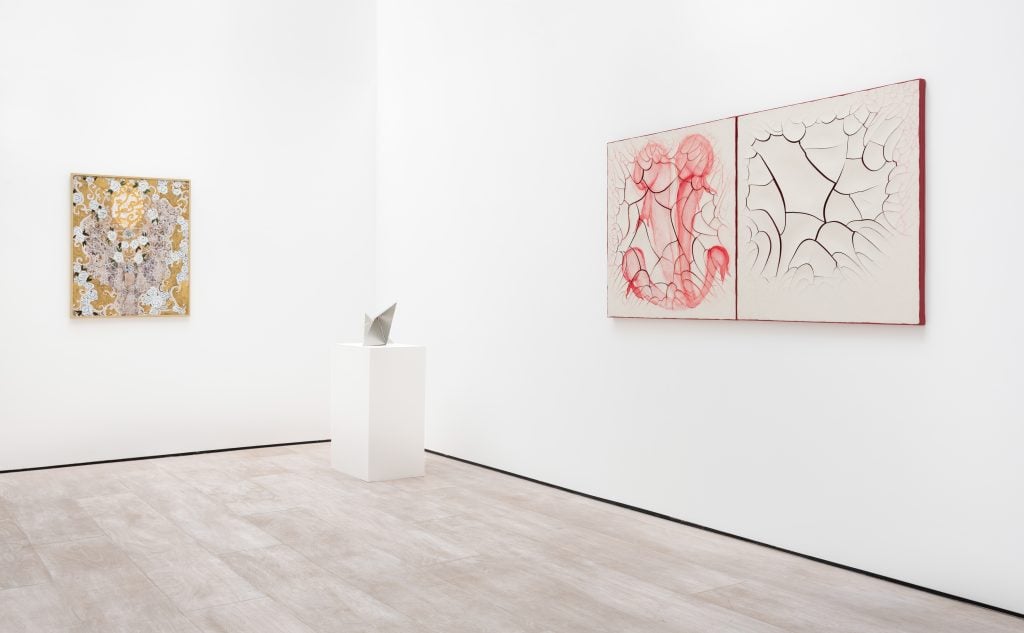
Installation view, “The Women’s Century—Female Perspectives in Brazilian Art” at Cecilia Brunson Projects. Photo by Eva Herzog, courtesy Cecilia Brunson Projects.
For the rest of gallery weekend, Jagger is hoping to visit some newer galleries. “I have always liked to discover young and emerging artists,” she said, noting that she was especially interested in Cecilia Brunson Projects’ show about Brazilian women Modernists. After being locked indoors for so long, and with more than 150 galleries taking part in the weekend’s festivities, there is plenty more to discover.
But when we bid farewell with a socially distanced bow and our masks still firmly in place, it is with an earnest “stay safe”—a reminder that we are not out of the woods just yet.